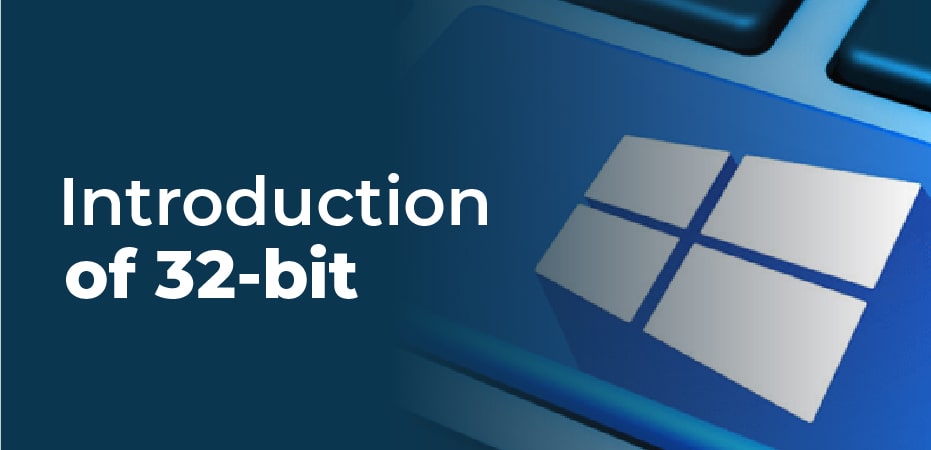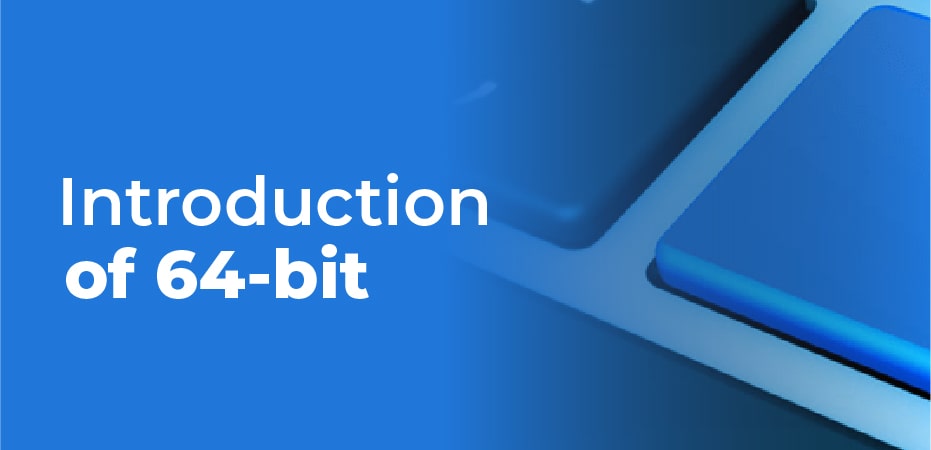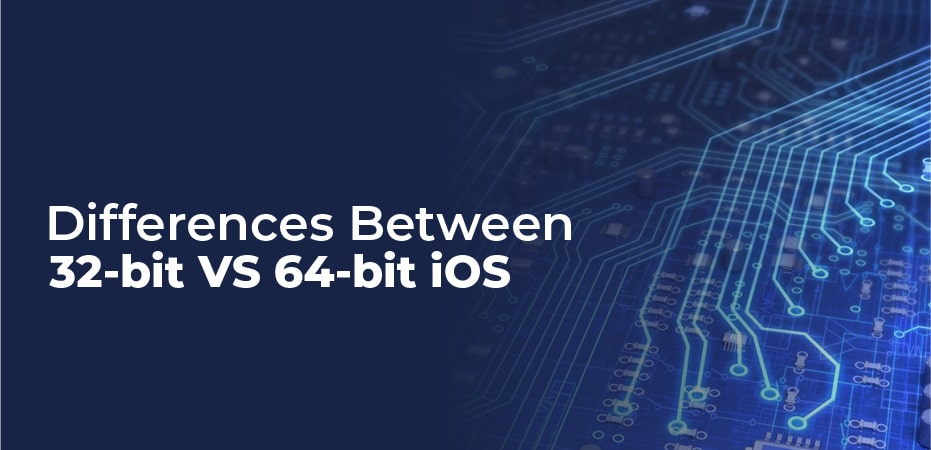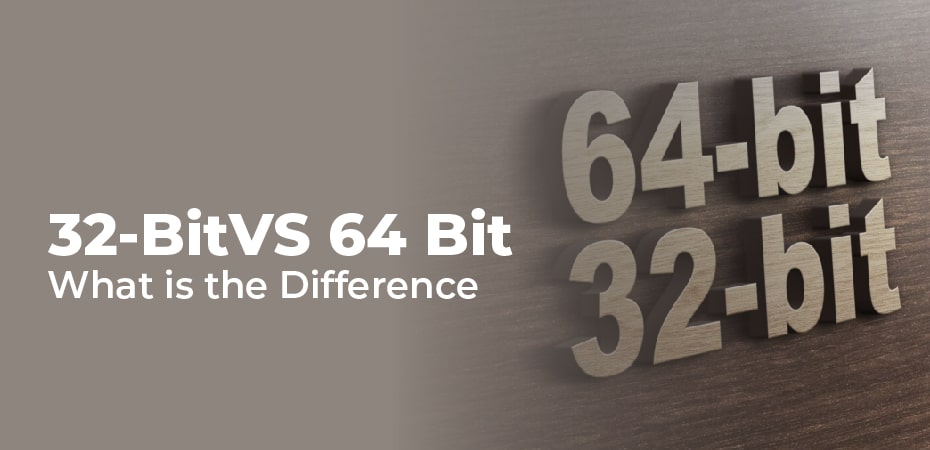It is possible to count in many ways, but when it comes to computers, there is only binary: 0 and 1. It means for 1-bit computing, you get two possible values; 2-bit computing is four values; and at 3-bits, you double that to eight (2 to the third power, aka 2 cubed).
Continue going exponentially until you arrive at 32-bit values worth 4,294,967,296; 64-bit values are worth 18,446,744,073,709,551,616. 18.4 quintillion and change is 18.4 quintillion.
That’s a lot of bits, and the numbers illustrate how much more powerful a chip that supports higher-bit computing can be. More than twice as powerful.
Most people these days are running 64-bit processors and 64-bit operating systems, which in turn run 64-bit software (for mobile devices) or apps (for desktop computers). Not always, however. There was a 32-bit version of Windows 7, 8, 8.1, and 10, as well as a 64-bit version of Windows 10.

Introduction of 32-bit:
A 32-bit CPU architecture can transfer 32 bits of data at a time. Whenever your CPU performs an operation, it can process a certain amount of information.

Introduction of 64-bit:
64-bit refers to the number of bits which should be processed or transmitted simultaneously, or the number of bits used for a single element. Using 64-bit microprocessors, computers can process data and memory addresses that are represented by 64 bits.

Differences Between 32-bit VS 64-bit iOS:
Advantages of 32-Bit Processor:
The following are some of the major advantages/benefits of 32-bit processors:
- One of the few advantages that can be mentioned is that it is compatible with all the older devices that were developed in the early 2000s and mid-1990s.
Advantages of 64-Bit Processor:
The following are the benefits and pros of using a 64-bit processor:
- Increased program performance and enables you to take advantage of 64-bit operating systems
- in addition to improved security
- With 64-bit Windows and a modern 64-bit processor, you get additional protection not available to 32-bit users.
- The 64-bit processor is equipped with security features that are not limited to kernel patch protection.
- You can create 16TB of virtual memory with the 64-bit processor. It should be noted that 8 TB of storage is allocated to run user processes, and 8 TB of storage is reserved to run kernel processes.
- A 64-bit processor offers more power. 64 computational values can be stored.
- The maximum RAM on a 64-bit computer is 16.8 terabytes.
- Dual-core, six-core, quad-core, and eight-core 64-bit processors are available
- Support for multiple cores increases the amount of calculations that can be performed, which can make your computer run faster as it has more processing power.
- Multi-core 64-bit processors are able to run software programs that require a variety of types of functions smoothly.
- Processes have access to virtual memory.
Disadvantages Of 32-Bit Processor:
These are the main cons/drawbacks associated with using a 32-Bit operating system:
- In my opinion, the biggest disadvantage is that 32-Bit operating systems are no longer developed by software vendors.
- A large number of processors require a 64-Bit operating system.
- Manufacturers often do not offer 32-Bit drivers for their hardware due to a lack of market demand or because the product is not suitable for 32-Bit drivers.
Disadvantages of 64-Bit Processor:
- The use of a 64-bit processor may have some disadvantages, including:
- There is a very strong likelihood that older hardware and systems will be unable to run 64-bit drivers.
- Despite the fact that a lot of old software can be converted into 64-bit versions, the process can be painful for some.


